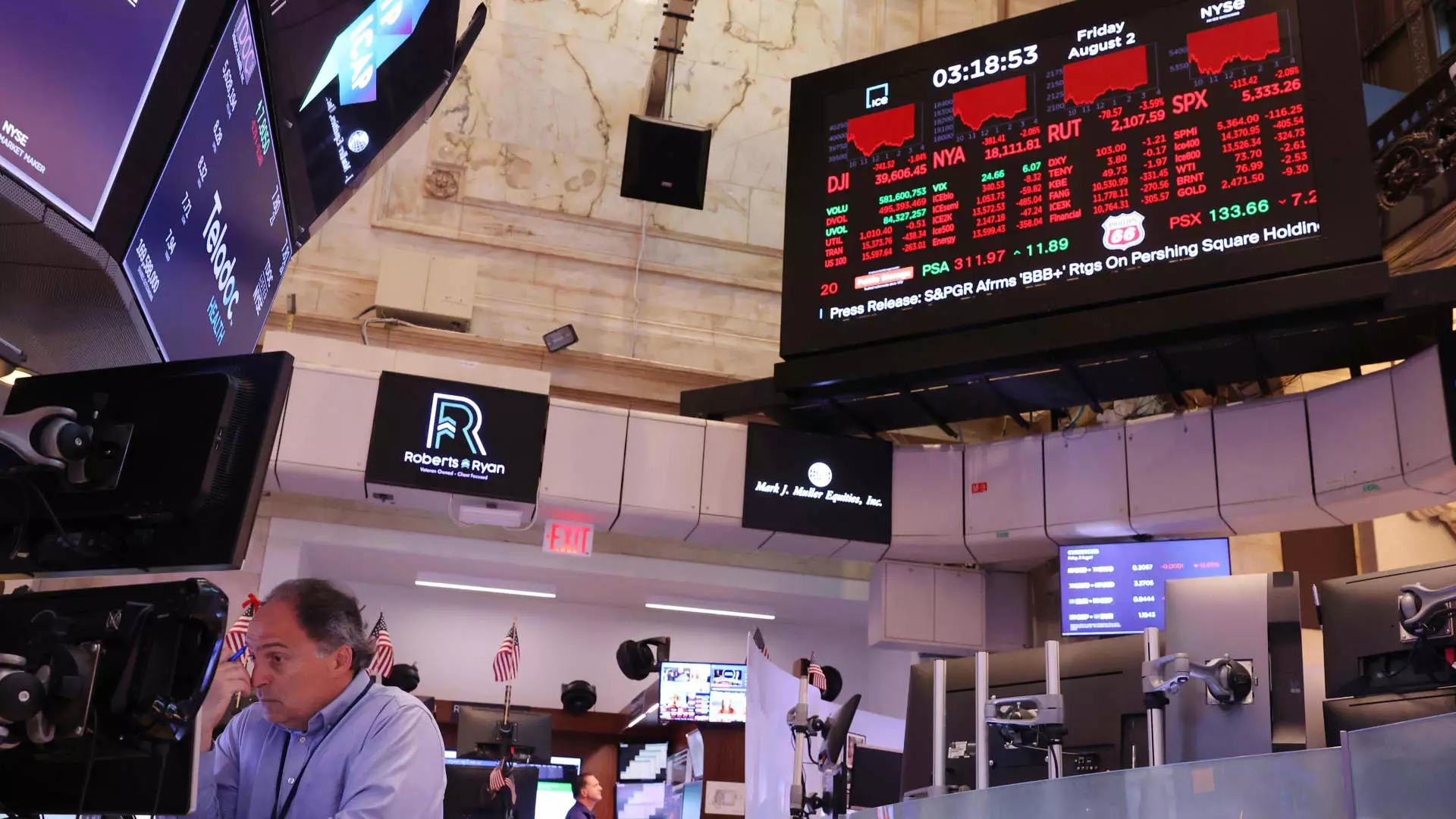The recent sharp stock-market selloff has sparked fears of a looming recession, particularly after the S&P 500 index experienced its worst loss in almost two years. Weaker-than-expected job data fueled concerns about the stability of the U.S. economy and the Federal Reserve’s approach to handling inflation. A “soft landing,” where inflation remains controlled without triggering an economic downturn, has been the goal, but recent data has investors worried about a possible “hard landing.” Despite these concerns, economists still view the likelihood of a recession within the next year as relatively low.
The rise in the U.S. unemployment rate has raised alarms, leading to predictions and increased chances of a recession. The Sahm rule, a historical indicator suggesting a recession when the unemployment rate deviates above a certain threshold, has been triggered. However, experts like Mark Zandi and Jay Bryson believe that the current economic cycle might not align with traditional recession indicators due to specific factors like an increase in labor supply rather than weakening demand.
While there are signs of a cooling labor market and worrying indicators, there is also resilience in the economy. Real consumer spending remains strong, suggesting that consumer confidence is high and could potentially drive economic growth. The financial health of households is still robust in aggregate, according to Bryson, providing some stability amidst the uncertainty.
Policy Responses and Future Projections
To mitigate the risks of a recession, experts like Zandi and Bryson advocate for the Federal Reserve to start cutting interest rates. This move could alleviate financial pressure on households, particularly lower earners, and provide a boost to the economy. The expectation is that the Fed will initiate rate cuts in September, easing some concerns about the economic outlook. While there are signs of weakening in certain sectors, the overall sentiment is cautious optimism tempered by the need for proactive policy measures.
The recent market turbulence and economic indicators have raised valid concerns about the possibility of a recession. However, it is essential to interpret these signals in the context of the broader economic landscape. While some indicators point to a slowdown, there are counterbalancing factors, such as consumer spending and household financial health, that suggest resilience in the economy. The path forward will require a combination of prudent policy decisions, market vigilance, and a nuanced understanding of economic trends to navigate the current uncertainties successfully.

